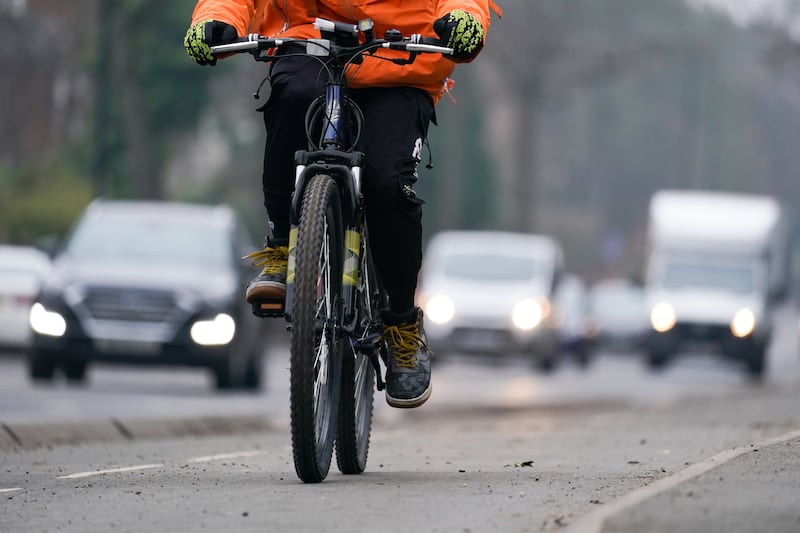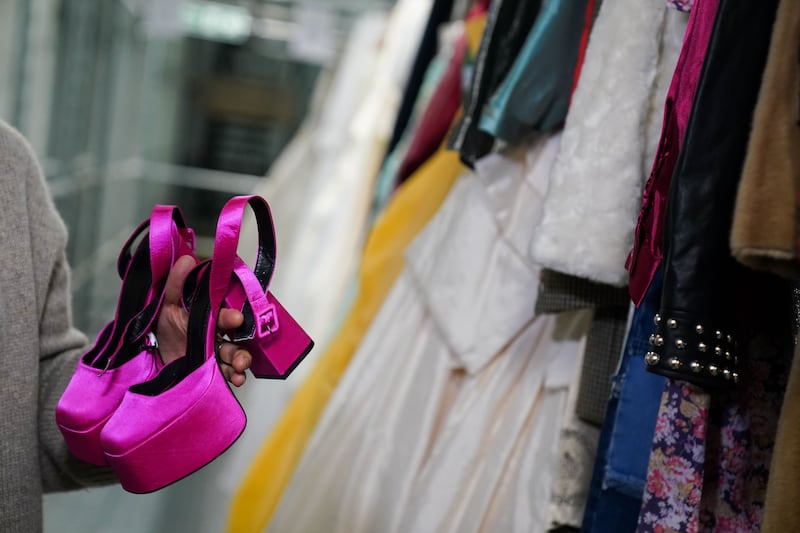The impact global warming will have on the planet, our lives and on our pockets has been widely and well documented for many years but a report from Ireland’s Climate Change Advisory Council, published last week, was particularly forthright in its assessment not just of the future but of the present.
In its latest report on adaptation measures needed to offset the worst of the crisis, the council pointed out that Ireland is already being adversely affected by climate impacts, with extreme flooding and coastal threats the most immediate risk, and stressed that it “is no longer solely a future problem”.
It highlighted “notable extreme events including the flooding in Midleton last autumn, the extremely wet winter and spring, and the marine heatwave around our shores in summer 2023″ and said that such events “highlight our changing climate is already negatively affecting citizens and key sectors, with ever increasing threats to both lives and livelihoods”.
It said Ireland must relentlessly pursue climate neutrality by forcing down emissions, and “develop and deliver measures to adapt to our changing climate with the same urgency”.
Ryanair dismisses hundreds of reader baggage experiences as misinformed ‘hearsay’
No dress and no refund: A reader’s saga ordering clothes online from an ‘Irish’ firm that used stock images for staff photos
GoCar charges almost €2,000 when rental car breaks down after 30 minutes
Has Ryanair started penalising people with carry-on luggage?
Given the scale of the crisis facing the entire planet, it is understandable if individual consumers find themselves wondering what, if anything, they can do to make a difference.
That is where narrowing the focus comes in. It can help particularly when it is clear that actively working to lower emissions on a micro-level not only goes some – tiny – way towards tackling the crisis we are all facing but also makes sense from an entirely selfish money-saving perspective too.
Too often the narrative suggests that climate change will cost us dearly – and it will – but taking steps in the right direction will also help us save and, with that in mind, here are just some of the ways you might save the planet while saving a few bob too.
1. Explore alternative transport
Moving people from A to B drives a huge volume of energy usage in Ireland – and elsewhere and within the transport sector private cars are the worst offenders. According to data from the Sustainable Energy Association of Ireland (SEAI) the cars most of us drive as a matter of routine account for more than 40 per cent of energy usage. Next in the league of damage is aviation on about 20 per cent and then heavy goods vehicle (HGV) freight on 15 per cent. Incidentally, public and private bus or coach transport accounts for less than 5 per cent of transport energy use but even that miserable figure is better than rail transport, which makes up no more than 1 per cent of our energy usage.
The inconvenient truth is that cars are a real problem and while the emissions they produce have fallen in recent years – and will fall further as there is wider adoption of electric vehicles – and investment in more active travel and a better cycling infrastructure is taking place, time is not on our side.
If we were to make a conscious decision to walk or use public transport just a bit more we could make a big difference to our carbon footprint while saving money too. Leaving the car at home if travelling a distance of 2km or less is one step in the right direction while looking to public transport for longer distance is also worth considering both from an environmental perspective and from a financial one.
And if you don’t believe us, here are some irrefutable numbers. A tank of fuel to take you from Dublin to Galway or Cork will cost about €70 – not including the money you will spend on sweets and lottery tickets in the fuel station shop when you stop to fill up. A private bus operator will take you there and back for not much more than €25. And it will give you access to free wifi too. Now taking the buses won’t work every time but if you swapped your car for a bus on just four occasions over the next 12 months you’d save the guts of €200 and reduce your carbon footprint while barely noticing any impact on your life.
2. Think before you drive
There is more that can be done. The average Irish motorist drives 16,000km every year and if the average price of fuel is €1.72 a litre, driving the average family car, which does 12.4km per litre (35 miles per gallon), will cost about €2,200. That is a lot of averages, we know, but the bottom line is that being just a bit more mindful about how and when you use your car could see your annual fuel bill reduce by at least 10 per cent which would save you more than €200 a year.
3. EVs - the lesser of two evils
It is rarely elegant to point the finger but when it comes to the climate crisis we all know a huge amount of responsibility lies with a multi-trillion-euro petrochemical industry that continues to extract oil from the ground at a ferocious rate to fuel cars which pump unconscionable amounts of petrol and diesel fumes into an already overloaded atmosphere.
Electric vehicles have long been held up as the way to wean us off fossil fuels and while they are not unproblematic and will not address the crisis on their own, they’re part of the solution and are – in the absence of us reverting to horses and carts – the least-worse option we have.
A petrol car produces one ton of CO2 for every 10,000km travelled, with five tonnes of CO2 generated in the extraction and refining of the oil needed for fuel for six years and a similar amount generated actually making the car.
Manufacturing an EV, by contrast, requires 10 tonnes of CO2 after which the decline in emissions is dramatic. When the numbers are totted up, someone buying a new petrol car today will be responsible for about 25 tonnes of CO2 between now and 2030 while an EV driver will generate less than half that. It’s not great but it’s better.
EVs are not cheap and the infrastructure needed to keep them moving is shocking but prices are falling and the number of charging points is growing. A savvy EV driver can keep their car moving for less than €500 a year or €1,700 cheaper than a more traditional car covering similar distances. The cost of servicing and repairing EVs is cheaper because they’re cleaner and have far fewer moving parts, while EV drivers can pay less in car insurance, less in tax and can get an SEAI grant of up to €3,500. When the savings over five years and the grant are combined, it comes in at €11,000, closing the gap between EVs and their petrol or diesel equivalents.
4. Practise good motor maintenance
Whatever car you have, you can still save yourself a few bob – while reducing emissions – by being a bit more tuned in to how it runs. Ensure the tyre pressure is right, get rid of any roof box you might have on it and don’t be turning on the engine to heat the car on cold mornings.
5. Sign up for the Bike to Work scheme

By taking advantage of the tax breaks available to cyclists and their employers, you can get a decent bike for half nothing. The Bike to Work (biketowork.ie) scheme covers bicycles and accessories up to a maximum of €1,250, rising to €1,500 for electric bikes. Your employer buys it and you pay for it, tax-free, over 12 months, which effectively knocks about 52 per cent off the price. Every kilometre you choose to cycle instead of drive saves approximately 250g of CO2 emissions, so you could easily save yourself a tonne – literally – of carbon each year. If your commute is just 8km each way and you usually drive, then you will save about €500 a year in fuel costs alone each year.
6. Have a veggie day

Diet can play a big part in what we do for the planet and our pockets. About one quarter of all the emissions we are responsible for on an individual level comes from what we put in our mouths, so it is worth looking at. We are not suggesting the entire country becomes vegan by the weekend, but might we suggest people eat just a little less meat? And we have wriggle room here as we consume as much as twice the global average of meat. By becoming a vegetarian a person can reduce their emissions by half but for many that is too extreme; however, if you were to cut meat out of your diet on just two days a week you would make a significant reduction to your carbon footprint. And eating vegetarian food is cheaper than eating meat as well. Let’s say you spend €15 a week on meat for two dinners to feed four people and you replace that with a fiver’s worth of beans, vegetables or pulses, you will save yourself €500 over the course of a year.
7. Cut down on food waste
Whatever about the merits of meat or meat-free, food waste remains a very big problem, with more than one million tonnes of food binned each year. Much of that food waste ends up in landfill quietly generating methane but that is not even the worst of it. It also had to be grown or reared and then transported from farm to retail outlets or restaurant and then prepared all over again which requires some level of carbon emissions. The most effective way to cut your emissions in this space is shop smarter and only buy what you will eat. The average Irish grocery bill is about €8,000 a year and if you can cut your food waste to as close to zero as possible you could save yourself as much as €1,000 a year.
8. Buy local produce
We live in a world where fresh mangoes and strawberries are available year-round. But at what cost? Where possible, shop in farmers’ markets and co-ops and buy food that is grown locally. The carbon footprint is dramatically reduced and you are supporting local enterprises, with the money you spend circulating in the local economy over and over and over again. And if you can, shop organic – it is better for the environment and, possibly, better for you too.
9. Put the brakes on fast fashion

We live in a world where many people treat clothes like disposable items. Some shops sell stuff so cheap that there is little incentive to take care of what you buy. But the amount of carbon generated by getting a €2 T-shirt to you can be horrendous and far outstrip the amount you are likely to use in a single day. So only buy what you are going to wear. And then, once you are done with it, try to find another home for it. We all need to consume less and use it for longer and in more ways than it was intended. By resolving to spend less on stuff that you don’t actually need and seek out better bargains in second-hand shops, you could easily save yourself €500 a year.
10. Get insulated
Check out the insulation in your attic. If there is none, get it done as soon as you can – it is both environmentally and economically sound. And if the last time you had your attic done was in the 1990s, it might be worth getting it topped up – there are large grants that can take the sting out of doing it and you’d be amazed at how much better the technology is today compared to times past. Getting a decent job done on it in the weeks ahead could see your energy costs over the winter fall by well over €100. By being more conscious of how you use energy in your home, you can save hundreds of euro this winter. Turn off the heat half an hour before you are due to leave and don’t turn it on until you return or set a timer so that it comes on half an hour before you come back. By turning your thermostat down by just one degree, your energy bill will fall by between 3 and 10 per cent. Don’t run your washing machine or dishwasher until they are full, and always run them on eco settings or at 30 degrees. Spend just a minute less in the shower every morning. Now all of these things on their own might not make an enormous difference to your finances but the impact is cumulative and by being your best energy-saving self you could save as much as €500 this winter.
11. Return the plastic
The Re-Turn deposit scheme has not been without its critics but its aim of improving recycling rates and reducing our reliance on virgin plastic cannot be faulted. Embracing it more fully and cutting back on the amount of plastic we buy will not only save money – it will also reduce our reliance on oil ever so slightly.
12. Make small changes
Take some smaller steps. Buy white bin bags – they are much easier to recycle than black ones. Don’t overfill your kettle. Make sure all your light bulbs are LEDs. Only print stuff if it’s absolutely necessary. Use laptops instead of desktops – they are as much as 80 per cent more energy efficient. Dimming your monitors can save a third of the energy, and turn your back on screensavers – they keep the monitor active when it would be better off asleep. Shut off everything when you are not using it. Take the stairs at work rather than forcing the lift to take you up and down. Except for those people unfortunate enough to live in areas where boil water notices are in place, there should be absolutely no reason why anyone is this country drinks bottled water. Indoor plants will do their bit to suck some of the carbon out of the atmosphere. If you are not overly green-fingered, pick easy-to-grow things such as bamboo – it is a nice house plant, grows quickly, is low-maintenance and can suck as much as four times the amount of carbon dioxide than other plants.
13. Learn not to fly
One of the more difficult steps to take would be to dramatically cut back on the time you spend on planes. This is a problem for Irish people because of the fact we live on an island but there are money-saving options out there. Boating rather than flying does take time, so you will need to be zen-like about the journey over the course of the 17 hours it takes to get from Rosslare to France. But it is cheaper. A family of four travelling to France in high season willvspend the guts of €100 on parking at Dublin Airport, while flights for four will come in at around €1,200 or more with the cost of car hire around €1,000. The cost of a ferry will be around €1,500 with fuel coming in at €200 or so depending on how far you drive. Totting up those very basic numbers, then, you do save hundreds of euro by taking the boat to France – although it is worth pointing out that not all countries are equal and only a handful are accessible by boat.
















